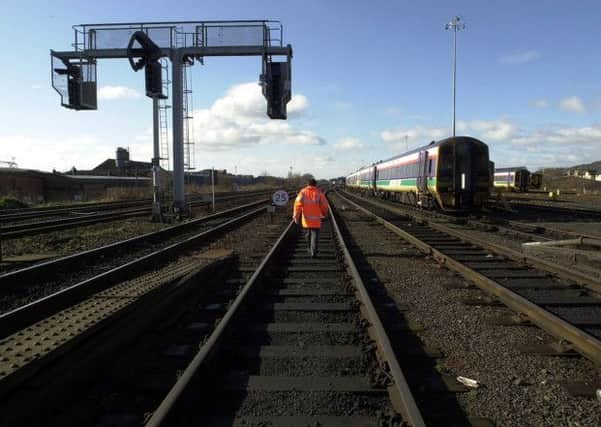Comment: Rail investment needed to rival haulage


Wherever you travel on Scotland’s road network, you see lorries. One of the great strengths of road haulage is that it can take advantage of more than 50 years of continuous improvement in the capacity and quality of the country’s trunk roads. Moving goods by road has become simpler, faster and cheaper – and, despite Scotland’s climate change targets, the Scottish Government has plans for a further £9 billion in road investment, which will make it ever harder for the more sustainable mode of transport, the freight train, to compete with the truck.
A critical aspect of road/rail freight competition north of the Border is the ease with which trucks can “go anywhere and do anything” – and this is a particular issue in the transport of international containers. The 1960s and 1970s saw an enormous shift away from loose-handled goods to their consolidation in high-capacity standard containers – 8ft high, 8ft wide, and either 20 ft or 40 ft long – allowing swifter, more cost-effective and secure intermodal transits across road, rail and sea. Nowadays, just about anything can be containerised, and this method of load handling has lent itself to major efficiencies.
Advertisement
Hide AdAdvertisement
Hide AdScotland’s economy is far more dependent on exports – particularly in the food and drink sector – than England’s and rail continues to play a big role in shifting export containers from Central Scotland to Britain’s five big deep sea ports at Felixstowe, Liverpool, Southampton, London Gateway and Tilbury. Over the past 40 years, the key trend in containerisation is for these standardised “boxes” to become higher and higher – initially to 8’6” and now 9’6”. While this causes no problem across our modern road system, where bridges and tunnels have been built with generous height clearances, the situation is very different on the rail network.
Britain’s railways were constructed in Victorian times with tighter height and width clearances than our continental equivalents. Since the 1970s, British Rail, then Railtrack and now Network Rail (with funding from the UK and Scottish Governments), have progressively improved the “loading gauge” clearance through bridges and tunnels on the trunk rail network, in order to keep rail freight competitive with the ubiquitous lorry. This crucial modernisation has been particularly evident on Scotland’s key international rail freight artery – the Anglo-Scottish West Coast Main Line (WCML) from Glasgow through Carlisle and Preston to London. Day in, day out, containers up to 9’6” high are shifted swiftly (up to 75mph), safely and sustainably by rail to destinations across England and mainland Europe. And full gauge clearance is also on course for completion along the East Coast Main Line (ECML).
However, beyond the WCML, ECML and major intermodal railheads at Coatbridge and Mossend, moving containers by rail gets more complicated. In the absence of cross-network modernisation, Scotland’s railway system is a patchwork of different loading gauges. Yes, 9’6” high boxes can be moved to key railheads in Grangemouth, for example, but not on every type of rail wagon – some wagon decks are higher than others, for historical reasons. Given ongoing government funding limits on upgrading the rail freight network, the industry has increasingly turned to new wagon designs as customers, especially retailers, have sought to use rail in preference to road haulage. A classic example has been the innovative WH Davis “Super Low45” wagons, introduced to service three years ago. With a deck height of just 720mm above the rail, the new wagons allow 9’6” high boxes to be conveyed over routes – such as those from Central Scotland to Aberdeen and Inverness – which otherwise are only gauge-cleared for 8’6” high boxes on traditional wagons.
This new wagon and container combination has also opened up the possibility of exploiting new routes for intermodal rail traffic – such as the West Highland Line to Fort William, the route to Loch Ryan for Northern Ireland, and potential whisky traffic from Elgin/Keith. However, in a setback to these hopes, last year a Super Low45 wagon hauled by the rail haulier, Direct Rail Services, was derailed near Gloucester, due to inadequate track maintenance by Network Rail. In line with the rail industry’s safety policy, the new wagons are currently banned from “secondary” lines such as those to Aberdeen and Inverness, just the kind of route for which they were designed, and the rail haulier may now be faced with the expense of wagon modifications to take account of an unforeseen combination of sub-standard track condition and empty containers leading to instability.
On such prosaic events hangs the scope for rail freight to fulfil its potential – to secure a substantial transfer of heavy traffic from a trunk road system suffering the particular burden of damage caused by 44-tonne lorries.
• David Spaven is Scottish Representative of the Rail Freight Group rfg.org.uk
SEE ALSO